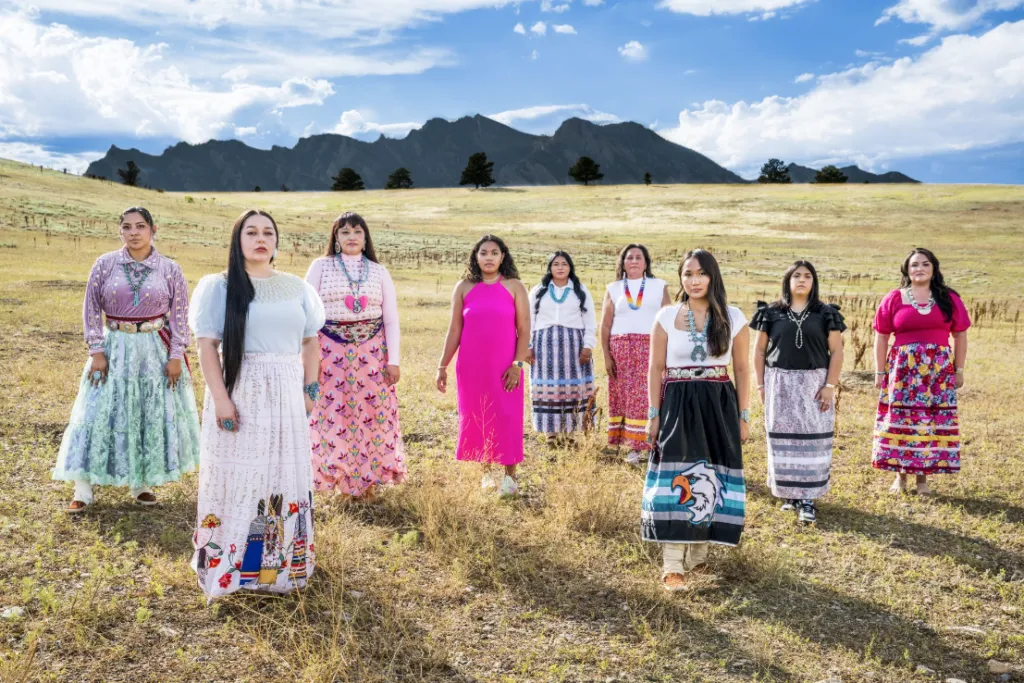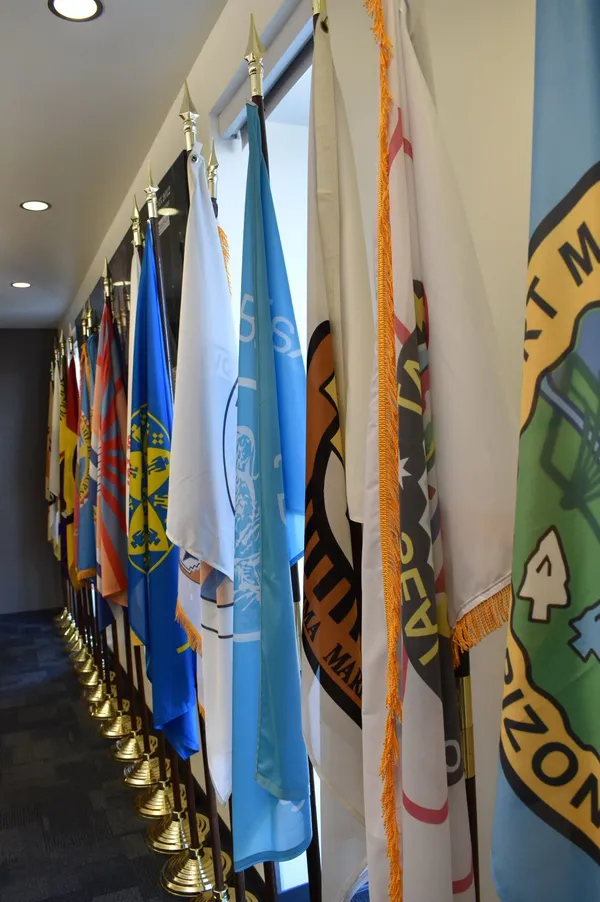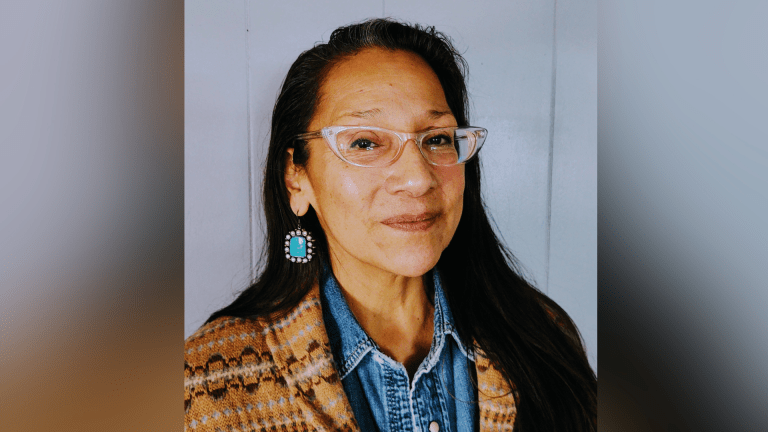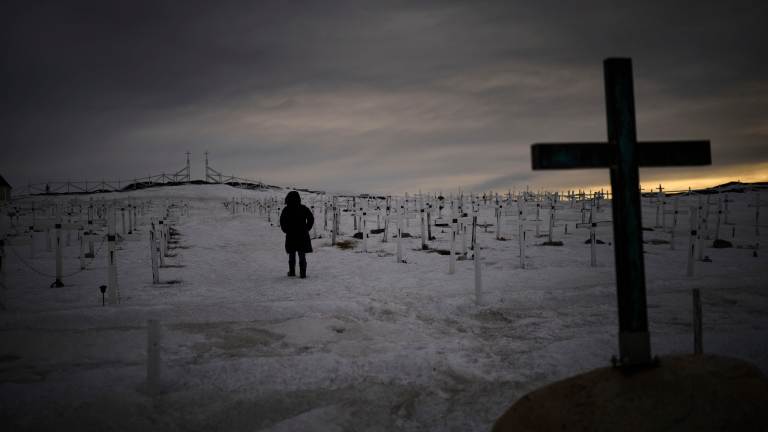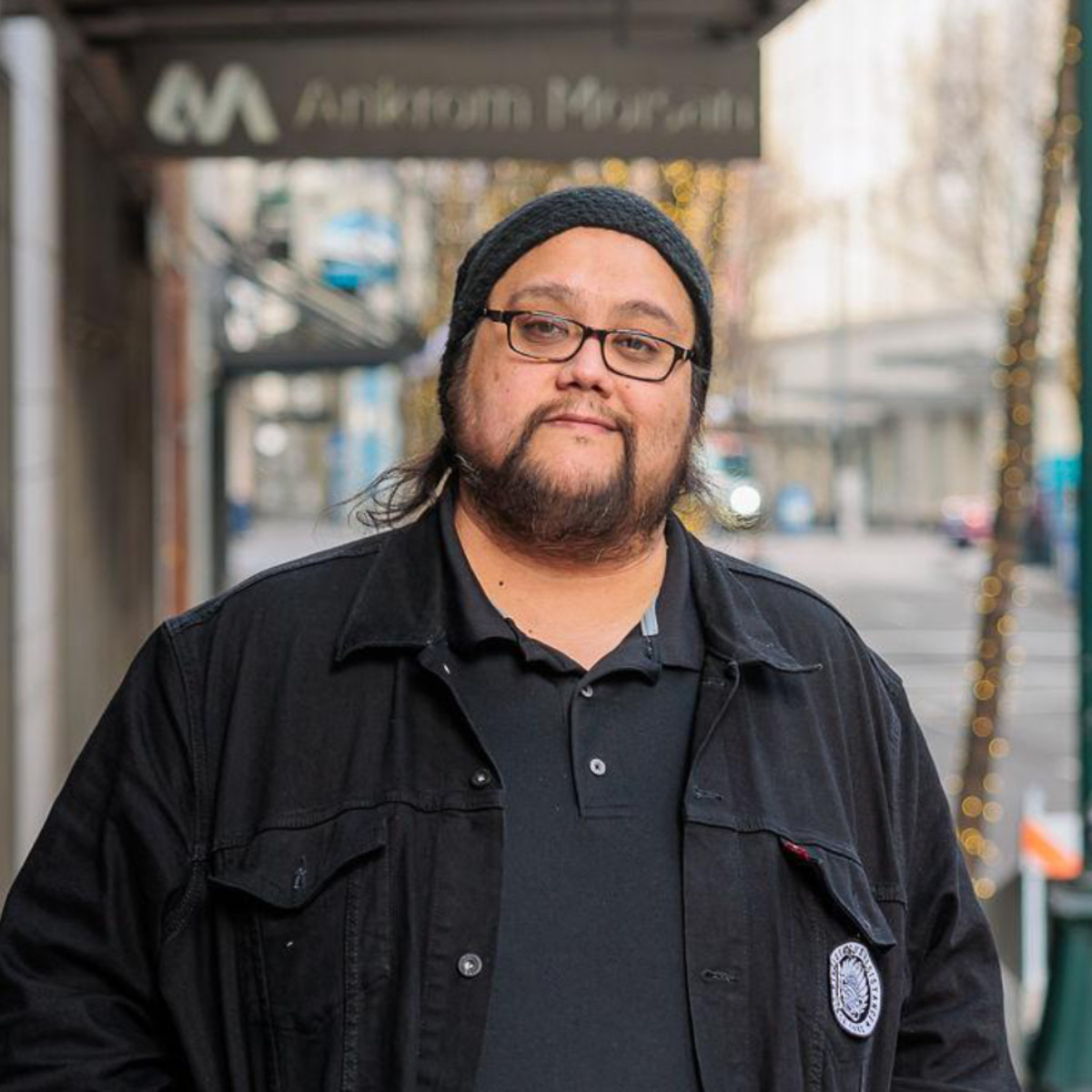Part III: Indian Education as a Constitutional Right
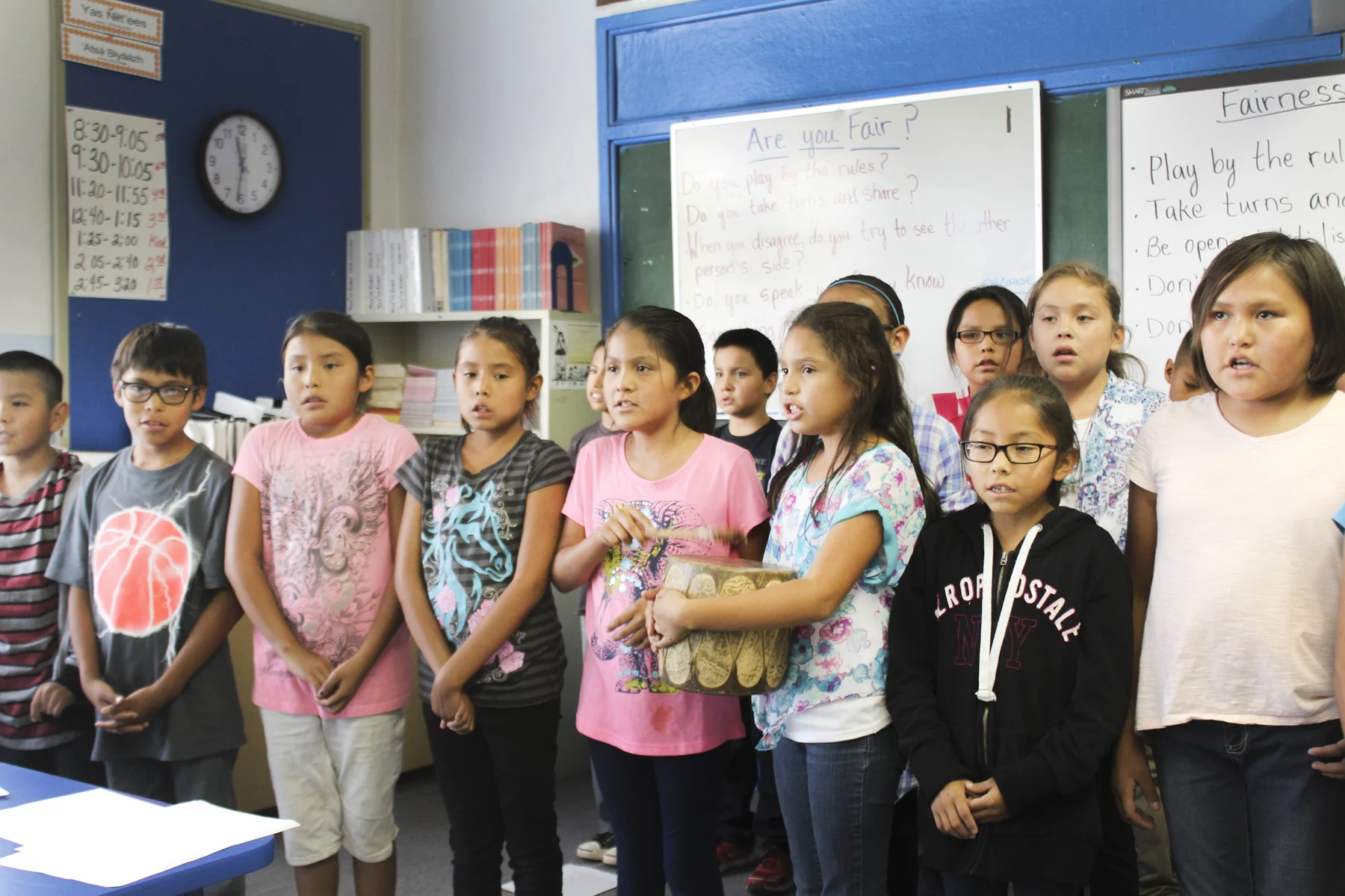
Navajo students at Crystal Boarding School in New Mexico sing traditional songs in class. (Photo/NPR)
Of the 183 BIE schools, 31 operate as Native charter schools (17%) with 22 (12%) as Native Language Medium Schools. While educational choice already exists in Indian Country through Tribal Grant Schools, only a very small proportion of the 644,000+ AIAN students are afforded this choice. This underscores the importance of hearing from tribal nations through formal consultation on any reformed impacting AIAN students.
In order to improve Indian education, the President should establish an American Indian Education specific executive order to make clear the recognition and respect of Indian Education as a distinct Federal right unique to American Indians as a treaty and trust obligation matter distinct from Diversity, Equity, and Inclusion (DEI). Whatever changes may occur to the U.S. Department of Education, there must be no adverse impacts on Indian education across any federal agency. In eliminating the U.S. Department of Education, transfer all federal funding for Indian Education to the Bureau of Indian Education. Evaluate and fully fund an Indian Education New Deal and Educational Choice for the 93% of Native students to attend Self Governance Tribally Controlled Grant Schools.
READ Part I: Indian Education as a Constitutional Right
READ Part II Indian Education as a Constitutional Right
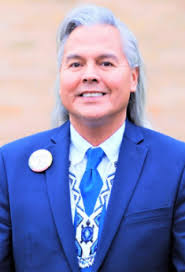

Navajo students at Crystal Boarding School in New Mexico sing traditional songs in class. (Photo/NPR)
By Aaron Payment
March 22, 2025]
Of the 183 BIE schools, 31 operate as Native charter schools (17%) with 22 (12%) as Native Language Medium Schools. While educational choice already exists in Indian Country through Tribal Grant Schools, only a very small proportion of the 644,000+ AIAN students are afforded this choice. This underscores the importance of hearing from tribal nations through formal consultation on any reformed impacting AIAN students.
In order to improve Indian education, the President should establish an American Indian Education specific executive order to make clear the recognition and respect of Indian Education as a distinct Federal right unique to American Indians as a treaty and trust obligation matter distinct from Diversity, Equity, and Inclusion (DEI). Whatever changes may occur to the U.S. Department of Education, there must be no adverse impacts on Indian education across any federal agency. In eliminating the U.S. Department of Education, transfer all federal funding for Indian Education to the Bureau of Indian Education. Evaluate and fully fund an Indian Education New Deal and Educational Choice for the 93% of Native students to attend Self Governance Tribally Controlled Grant Schools.
READ Part I: Indian Education as a Constitutional Right
READ Part II Indian Education as a Constitutional Right

Dr. Aaron Payment
Assess the capacity for creation of Tribal Grant Schools including assessment of economies of scale with local inter-tribal coalitions to determine viability for staffing, operations and facilities. Evaluate BIE operated schools to transition to Tribally Controlled Grant Schools or Tribal District Controlled Consortiums to continue to operate under Tribal Self-Governance funding. Fully fund Tribally Controlled Higher Education and articulate Advanced Placement opportunities to enter a TCU with earned college credit upon high school graduation. Fund individual educational planning (IEPs) and allow for Tribal Grant Schools to contract with adjacent and intermediate school districts to supply special education services. Fully fund education training and teacher certification and collaborate with tribally controlled colleges to provide this education.
Another round of formal government-to-government Tribal Consultation must be scheduled to invite Tribal Nations to weigh in on Sections 3, 4, and 5 of Trump’s Executive Order on Education. Fully fund Self-Governance Tribal Grant Schools for the 93% of American Indian Alaska Native students who currently attend public schools. Transfer Title VI, Impact Aid, and all Federal Title funding for which each American Indian Alaska Native student is eligible in the form of vouchers from public schools to newly created Self-Governance Tribal Grant Schools. Situate all Indian education under the U.S. Department of Interior and BIE.
Transfer all early child education opportunities for American Indian Alaska Natives to the Bureau of Indian Education. As the treaty and trust obligation was paid in full, it is recommended to eliminate any means test for eligibility to attend tribal Early Head Start and Tribal Head Start. Fully fund the cost of providing early education for American Indian Alaska Natives though tribally controlled and operated Early Head Start and Head Start as well as provide vouchers to attend non-Tribal preschool or head start for AIAN students who do not reside on or near a reservation. Fully fund early childhood education training and certification to staff Tribal Early Child Care Education and collaborate with tribally controlled colleges to provide this education.
Consultation as a formal government to government exercise should be done respectfully to fully engage the input, direction, and consent of tribal nations. Consultation must NOT be a one and done paternalistic exercise of collecting input from special interests or even constituents. The inclusion of Article I, Section 8, Paragraph 3 in the US Constitution flowed from the Northwest Ordinance which was drafted by George Washington, General Henry Knox, and Thomas Jefferson (our Nation’s first Secretary of State) and subsequent treaties, providing for a perpetual Indian education not based on who is president.
Dr. Payment currently serves on his Tribal Council. He previously served 22 years in office including four terms as Tribal Chairperson. He also served for nearly a decade on the National Congress of American Indians Executive Committee including at 1 st VP twice. A high school dropout, Dr. Payment earned five college degrees including doctorate in Education (EdD). He served as a university faculty teaching Native Studies/Political Science; as School Board President of a Tribal Grant and State Charter School; and as a Tribal College Board Regent Vice-President. Dr. Payment can be reached at AAPayment@saulttribe.net
Assess the capacity for creation of Tribal Grant Schools including assessment of economies of scale with local inter-tribal coalitions to determine viability for staffing, operations and facilities. Evaluate BIE operated schools to transition to Tribally Controlled Grant Schools or Tribal District Controlled Consortiums to continue to operate under Tribal Self-Governance funding. Fully fund Tribally Controlled Higher Education and articulate Advanced Placement opportunities to enter a TCU with earned college credit upon high school graduation. Fund individual educational planning (IEPs) and allow for Tribal Grant Schools to contract with adjacent and intermediate school districts to supply special education services. Fully fund education training and teacher certification and collaborate with tribally controlled colleges to provide this education.
Another round of formal government-to-government Tribal Consultation must be scheduled to invite Tribal Nations to weigh in on Sections 3, 4, and 5 of Trump’s Executive Order on Education. Fully fund Self-Governance Tribal Grant Schools for the 93% of American Indian Alaska Native students who currently attend public schools. Transfer Title VI, Impact Aid, and all Federal Title funding for which each American Indian Alaska Native student is eligible in the form of vouchers from public schools to newly created Self-Governance Tribal Grant Schools. Situate all Indian education under the U.S. Department of Interior and BIE.
Transfer all early child education opportunities for American Indian Alaska Natives to the Bureau of Indian Education. As the treaty and trust obligation was paid in full, it is recommended to eliminate any means test for eligibility to attend tribal Early Head Start and Tribal Head Start. Fully fund the cost of providing early education for American Indian Alaska Natives though tribally controlled and operated Early Head Start and Head Start as well as provide vouchers to attend non-Tribal preschool or head start for AIAN students who do not reside on or near a reservation. Fully fund early childhood education training and certification to staff Tribal Early Child Care Education and collaborate with tribally controlled colleges to provide this education.
Consultation as a formal government to government exercise should be done respectfully to fully engage the input, direction, and consent of tribal nations. Consultation must NOT be a one and done paternalistic exercise of collecting input from special interests or even constituents. The inclusion of Article I, Section 8, Paragraph 3 in the US Constitution flowed from the Northwest Ordinance which was drafted by George Washington, General Henry Knox, and Thomas Jefferson (our Nation’s first Secretary of State) and subsequent treaties, providing for a perpetual Indian education not based on who is president.
Dr. Payment currently serves on his Tribal Council. He previously served 22 years in office including four terms as Tribal Chairperson. He also served for nearly a decade on the National Congress of American Indians Executive Committee including at 1 st VP twice. A high school dropout, Dr. Payment earned five college degrees including doctorate in Education (EdD). He served as a university faculty teaching Native Studies/Political Science; as School Board President of a Tribal Grant and State Charter School; and as a Tribal College Board Regent Vice-President. Dr. Payment can be reached at AAPayment@saulttribe.net
She’s on a scholarship at a tribal college in Wisconsin. The Trump administration suspended the USDA grant that funded it.
Tribal colleges and universities, which ProPublica last year found are perpetually underfunded by Congress, say it’s illegal to withhold financial support from them. Their funding is protected by treaties and other legal obligations on the federal government
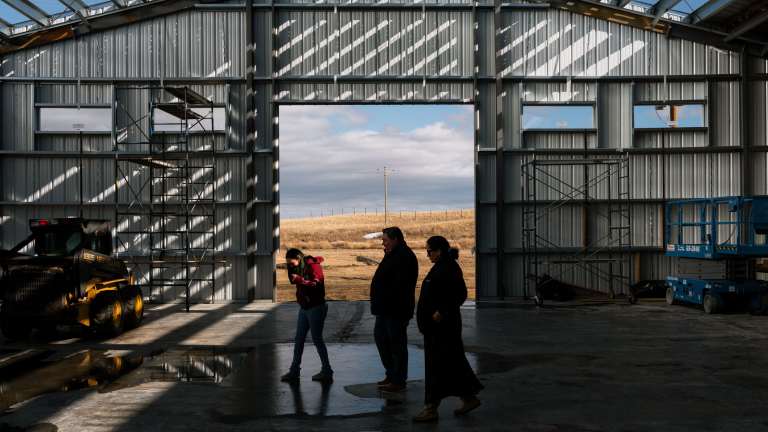
Blackfeet Community College President Brad Hall (center) and Institutional Development Director Melissa Weatherwax (right) walk through a half-finished building meant to host a college program training workers for the tribe’s slaughterhouse. Without federal grants, the Montana college might pause the building project.
Tribal colleges and universities, which ProPublica last year found are perpetually underfunded by Congress, say it’s illegal to withhold financial support from them. Their funding is protected by treaties and other legal obligations on the federal government

Blackfeet Community College President Brad Hall (center) and Institutional Development Director Melissa Weatherwax (right) walk through a half-finished building meant to host a college program training workers for the tribe’s slaughterhouse. Without federal grants, the Montana college might pause the building project.
(Rebecca Stumpf for ProPublica)
PROPUBLICA
MAR 18, 2025
This story was originally published by ProPublica.
Matt Krupnick
ProPublica
Alexandria Ehlert has pursued a college education hoping to become a park ranger or climate scientist. Now she’s wondering whether she’ll ever finish her studies at College of Menominee Nation.
The scholarship that kept her afloat at the tribal college in Wisconsin vanished in recent weeks, and with it her optimism about completing her degrees there and continuing her studies at a four-year institution.
Ehlert is one of about 20 College of Menominee Nation students who rely on scholarships funded through a U.S. Department of Agriculture grant. The Trump administration suspended the grant amid widespread cost-cutting efforts. Unless other money can be found, Ehlert and the other scholarship students are in their final weeks on campus.
“It’s leaving me without a lot of hope,” said Ehlert, a member of the Oneida nation. “Maybe I should just get a warehouse job and drop school entirely.”
Many staff and students at the country’s 37 tribal colleges and universities, which rely heavily on federal dollars, have been alarmed by the suspension of crucial grants early in Donald Trump’s second presidency.
Even before he retook office, the schools essentially lived paycheck to paycheck. A 1978 law promised them a basic funding level, but Congress hasn’t come close to fulfilling that obligation in decades. Today, the colleges get a quarter-billion dollars less per year than they should, when accounting for inflation, and receive almost nothing to build and maintain their campuses. Water pipes break frequently, roofs leak, ventilation systems fail and buildings crumble. Other than minuscule amounts of state funding in some cases and a smattering of private donations, tribal colleges that lose any federal funding have few other sources of income.
“You freeze our funding and ask us to wait six months to see how it shakes out, and we close,” said Ahniwake Rose, president of the American Indian Higher Education Consortium, which lobbies for tribal colleges in Washington, D.C. “That’s incredibly concerning.”
At least $7 million in USDA grants to tribal colleges and universities have been suspended, Rose said. The schools’ concerns have been magnified by a lack of communication from federal agencies, which she attributed partly to many federal workers being laid off as the Trump administration has made across-the-board cuts to the federal bureaucracy.
Staff at the College of Menominee Nation were seeking reimbursement for $50,000 spent on research and other work conducted in January, when a federal website indicated a grant from the USDA had been suspended. It was a technical issue, they were told when they first reached someone at the agency, and they needed to contact technical support. But that didn’t solve the problem. Then a few days later the department told the college to halt all grant activity, including Ehlert’s scholarship, without explaining why or for how long.
The frozen grants are administered by the USDA’s National Institute of Food and Agriculture, or NIFA. They stem from a 1994 law, the Equity in Educational Land-Grant Status Act, which designated the tribal colleges as land-grant institutions. Congress created the land-grant system in the 19th century to provide more funding for agricultural and vocational degrees.
The 1994 addition of tribal colleges to the list of land-grant institutions gave the schools access to more funding for specific projects, mostly focused on food and agriculture. Many grants funded food research and projects to increase the availability of food, which is particularly important in rural areas with fewer grocery stores and restaurants.
“It’s really precarious for tribal colleges,” said Twyla Baker, president of Nueta Hidatsa Sahnish College in North Dakota. Her college also lost access to NIFA funds that were paying for food research and a program that connects Indigenous farmers, ranchers and gardeners to each other. “We don’t have large endowments to fall back on.”
Several other college presidents said they were preparing for the worst. Red Lake Nation College in Minnesota was freezing salaries, travel and hiring, said President Dan King. So was United Tribes Technical College in North Dakota, which paused renovation of a dormitory originally built as military barracks in 1900. ProPublica reported in October that tribal colleges need more than half a billion dollars to catch up on campus maintenance.
“We’re hoping to get started soon, because we have a short construction season here,” said Leander McDonald, president of the United Tribes college.
At Blackfeet Community College in northern Montana, a NIFA grant is helping to create a program to train workers for the Blackfeet tribe’s new slaughterhouse. The college has started construction on a new building, but President Brad Hall worries that without access to promised federal funds, he might have to pause the project.
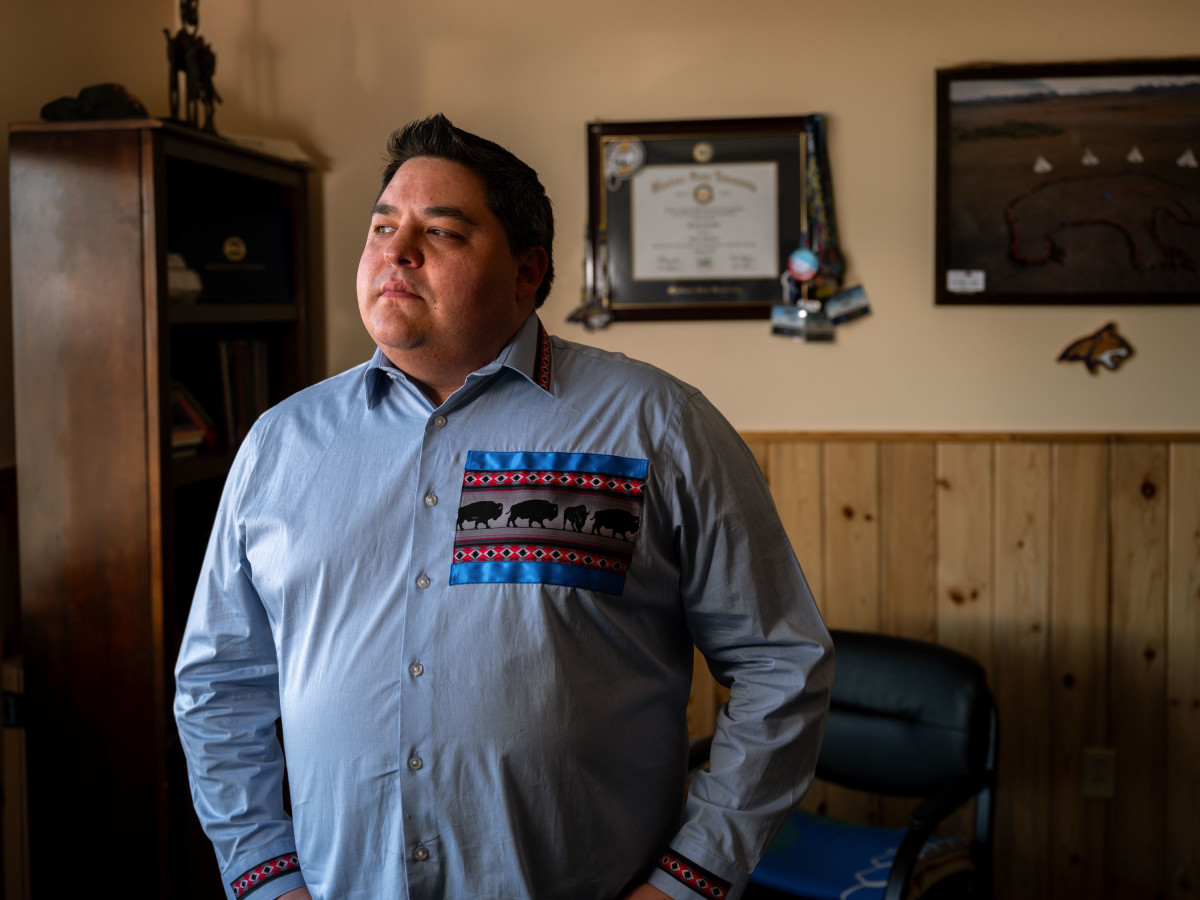
Hall, the school’s president, on the campus of Blackfeet Community College in Browning, Montana. (Rebecca Stumpf for ProPublica)
Like other tribal college leaders, Hall hasn’t been able to get clear answers from the USDA. Unlike some other schools, his college has been able to access federal funds, but he wonders for how long.
“Without the clarity and without the communication, it’s very hard to make decisions right now,” he said. “We’re in a holding pattern, combined with a situation where the questions aren’t being answered to our satisfaction.”
USDA spokespeople declined to answer questions. The agency emailed a written statement noting that “NIFA programs are currently under review,” but did not provide details on which grants have been suspended or for how long. The agency did not respond to requests for clarification.
Some tribal college leaders theorized they were targeted partly because of the formal name of the 1994 land-grant law: the Equity in Educational Land-Grant Status Act. The Trump administration has laid waste to federal spending on programs with “diversity,” “equity” or “inclusion” in the names.
While “equity” often refers to fairness in relation to race or sex, in the 1994 bill, Congress used the word to highlight that tribal colleges would finally have access to the same funds that 19th-century laws had made available to other land-grant colleges and universities. A spokesperson for the organization that represents nontribal land-grant institutions, the Association of Public and Land-grant Universities, said he was not aware of any USDA funds to nontribal colleges being suspended.
Tribal colleges argue their funding is protected by treaties and the federal trust responsibility, a legal obligation requiring the United States to protect Indigenous resources, rights and assets. Cutting off funding to the tribal colleges is illegal, several university presidents said.
“We were promised education and health care and basic needs,” said King at Red Lake Nation College. “The fact that we’re being lumped in with these other programs — well, we’re not like them.”
The College of Menominee Nation was only a year into its game-changing $9 million USDA grant, which was funding workforce development, training students in local trades such as forestry, and improving food access for Indigenous people. The five-year grant was a “once-in-a-lifetime award,” said college President Christopher Caldwell.
“We want our students to graduate and have healthy job opportunities,” Caldwell said. “Now it just kind of got cut off at the knees.”
BY PROPUBLIC
The Mission
PROPUBLICA
MAR 18, 2025
This story was originally published by ProPublica.
Matt Krupnick
ProPublica
Alexandria Ehlert has pursued a college education hoping to become a park ranger or climate scientist. Now she’s wondering whether she’ll ever finish her studies at College of Menominee Nation.
The scholarship that kept her afloat at the tribal college in Wisconsin vanished in recent weeks, and with it her optimism about completing her degrees there and continuing her studies at a four-year institution.
Ehlert is one of about 20 College of Menominee Nation students who rely on scholarships funded through a U.S. Department of Agriculture grant. The Trump administration suspended the grant amid widespread cost-cutting efforts. Unless other money can be found, Ehlert and the other scholarship students are in their final weeks on campus.
“It’s leaving me without a lot of hope,” said Ehlert, a member of the Oneida nation. “Maybe I should just get a warehouse job and drop school entirely.”
Many staff and students at the country’s 37 tribal colleges and universities, which rely heavily on federal dollars, have been alarmed by the suspension of crucial grants early in Donald Trump’s second presidency.
Even before he retook office, the schools essentially lived paycheck to paycheck. A 1978 law promised them a basic funding level, but Congress hasn’t come close to fulfilling that obligation in decades. Today, the colleges get a quarter-billion dollars less per year than they should, when accounting for inflation, and receive almost nothing to build and maintain their campuses. Water pipes break frequently, roofs leak, ventilation systems fail and buildings crumble. Other than minuscule amounts of state funding in some cases and a smattering of private donations, tribal colleges that lose any federal funding have few other sources of income.
“You freeze our funding and ask us to wait six months to see how it shakes out, and we close,” said Ahniwake Rose, president of the American Indian Higher Education Consortium, which lobbies for tribal colleges in Washington, D.C. “That’s incredibly concerning.”
At least $7 million in USDA grants to tribal colleges and universities have been suspended, Rose said. The schools’ concerns have been magnified by a lack of communication from federal agencies, which she attributed partly to many federal workers being laid off as the Trump administration has made across-the-board cuts to the federal bureaucracy.
Staff at the College of Menominee Nation were seeking reimbursement for $50,000 spent on research and other work conducted in January, when a federal website indicated a grant from the USDA had been suspended. It was a technical issue, they were told when they first reached someone at the agency, and they needed to contact technical support. But that didn’t solve the problem. Then a few days later the department told the college to halt all grant activity, including Ehlert’s scholarship, without explaining why or for how long.
The frozen grants are administered by the USDA’s National Institute of Food and Agriculture, or NIFA. They stem from a 1994 law, the Equity in Educational Land-Grant Status Act, which designated the tribal colleges as land-grant institutions. Congress created the land-grant system in the 19th century to provide more funding for agricultural and vocational degrees.
The 1994 addition of tribal colleges to the list of land-grant institutions gave the schools access to more funding for specific projects, mostly focused on food and agriculture. Many grants funded food research and projects to increase the availability of food, which is particularly important in rural areas with fewer grocery stores and restaurants.
“It’s really precarious for tribal colleges,” said Twyla Baker, president of Nueta Hidatsa Sahnish College in North Dakota. Her college also lost access to NIFA funds that were paying for food research and a program that connects Indigenous farmers, ranchers and gardeners to each other. “We don’t have large endowments to fall back on.”
Several other college presidents said they were preparing for the worst. Red Lake Nation College in Minnesota was freezing salaries, travel and hiring, said President Dan King. So was United Tribes Technical College in North Dakota, which paused renovation of a dormitory originally built as military barracks in 1900. ProPublica reported in October that tribal colleges need more than half a billion dollars to catch up on campus maintenance.
“We’re hoping to get started soon, because we have a short construction season here,” said Leander McDonald, president of the United Tribes college.
At Blackfeet Community College in northern Montana, a NIFA grant is helping to create a program to train workers for the Blackfeet tribe’s new slaughterhouse. The college has started construction on a new building, but President Brad Hall worries that without access to promised federal funds, he might have to pause the project.

Hall, the school’s president, on the campus of Blackfeet Community College in Browning, Montana. (Rebecca Stumpf for ProPublica)
Like other tribal college leaders, Hall hasn’t been able to get clear answers from the USDA. Unlike some other schools, his college has been able to access federal funds, but he wonders for how long.
“Without the clarity and without the communication, it’s very hard to make decisions right now,” he said. “We’re in a holding pattern, combined with a situation where the questions aren’t being answered to our satisfaction.”
USDA spokespeople declined to answer questions. The agency emailed a written statement noting that “NIFA programs are currently under review,” but did not provide details on which grants have been suspended or for how long. The agency did not respond to requests for clarification.
Some tribal college leaders theorized they were targeted partly because of the formal name of the 1994 land-grant law: the Equity in Educational Land-Grant Status Act. The Trump administration has laid waste to federal spending on programs with “diversity,” “equity” or “inclusion” in the names.
While “equity” often refers to fairness in relation to race or sex, in the 1994 bill, Congress used the word to highlight that tribal colleges would finally have access to the same funds that 19th-century laws had made available to other land-grant colleges and universities. A spokesperson for the organization that represents nontribal land-grant institutions, the Association of Public and Land-grant Universities, said he was not aware of any USDA funds to nontribal colleges being suspended.
Tribal colleges argue their funding is protected by treaties and the federal trust responsibility, a legal obligation requiring the United States to protect Indigenous resources, rights and assets. Cutting off funding to the tribal colleges is illegal, several university presidents said.
“We were promised education and health care and basic needs,” said King at Red Lake Nation College. “The fact that we’re being lumped in with these other programs — well, we’re not like them.”
The College of Menominee Nation was only a year into its game-changing $9 million USDA grant, which was funding workforce development, training students in local trades such as forestry, and improving food access for Indigenous people. The five-year grant was a “once-in-a-lifetime award,” said college President Christopher Caldwell.
“We want our students to graduate and have healthy job opportunities,” Caldwell said. “Now it just kind of got cut off at the knees.”
BY PROPUBLIC
The Mission
To expose abuses of power and betrayals of the public trust by government, business, and other institutions, using the moral force of investigative journalism to spur reform through the sustained spotlighting of wrongdoing.
Haskell Indian Nations University
Student leaders said the university planned to rehire faculty back as adjunct instructors as officials work to deal with other cuts
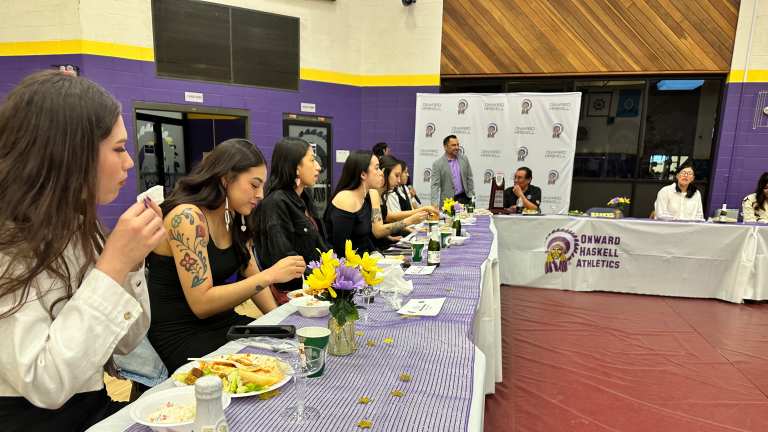
Members of the Haskell Indian Nations University's women's basketball team were honored Thursday, March 6, 2025, at Coffin Sports Complex for winning the 2025 Continental Athletic Conference Women’s Basketball Championship Tournament held Feb. 27-March 2 at Haskell. The celebration came as news was announced that their coach, Adam Strom, who had been laid off during Trump administration layoffs, would join other terminated instructors in returning as an adjunct instructor. He coached the team to the championship without pay. (Photo by Kevin Abourezk/ICT)
KEVIN ABOUREZK
UPDATED:
MAR 7, 2025
UPDATED: This story has been updated to include a statement from the American Indian Higher Education Consortium about the reinstatement of employees.
Kevin Abourezk
ICT
LAWRENCE, Kansas — Student government leaders at Haskell Indian Nations University — beset after losing nearly 25 percent of its faculty and staff as a result of federal layoffs last month — announced Thursday that faculty members who were terminated will be returning to their positions as adjunct instructors.
The federal layoffs of probationary employees affected nearly 40 employees, including seven faculty members. Haskell University Frank Arpan said in a letter Monday to the "Haskell community" that the rehired faculty members were expected to resume teaching their classes this week.
“Haskell faculty that were terminated in the probationary layoffs will be returning to the classroom to finish the semester under the adjunct contract,” he said.
The American Indian Higher Education Consortium, a organization that serves the 34 tribal colleges and universities across the country, posted a statement on its Facebook page Friday afternoon that "25 positions recently terminated at Haskell Indian Nations University and Southwestern Indian Polytechnic Institute have been reinstated" and thanked Secretary of Interior Doug Burgum for restoring this "vital infrastructure for Indian Country."
"However, there are nearly 30 positions who serve critical needs at these institutions that still need to be addressed," read the statement. "We urge the Bureau of Indian Education to continue to address the abrupt cuts to funding and support. The progress to restore our institutions is a direct result of tireless community advocacy, and we encourage the Bureau of Indian Affairs to maintain its commitment to providing quality education for Native students."
Both tribal colleges are operated by the Bureau of Indian Education, under the U.S. Department of Interior. It’s one of many federal agencies impacted by the Trump administration’s decision to lay off hundreds of thousands of probationary employees nationwide, including thousands in Indian Country.
The Haskell Indian Nations University Student Government Association shared the news Thursday on its Facebook page, but noted that other employees affected by the Trump administration layoffs were not included.
"However, this reinstatement only applies to instructors – other employees who were terminated are not included in this decision. The university acknowledges the difficult circumstances faced by all affected staff and is continuing to explore solutions where possible,” the student association stated.
The student association said the Haskell Foundation, which operates separately from the university’s federal employment system, would manage the adjunct instructor contracts. However, the foundation's president, Bo Schneider, told ICT late Thursday night that the university, not the foundation, would be handling the instructor contracts.
“Haskell recognizes the challenges that come with these changes and remains committed to supporting students, faculty and staff during this transition,” the student association stated. “We appreciate the patience and resilience of the Haskell community as they navigate these adjustments together.”
The foundation launched a fundraiser after nearly 40 Haskell employees, including seven instructors, multiple coaches, administrative and custodial workers and others, were "abruptly terminated on Feb. 14, with their pay ending that very day and benefits only lasting another 30 days," Schneider said.
As of Thursday, the foundation had raised $140,000 toward its goal of $350,000.
The layoffs have led to numerous student and campus services being curtailed or closed, including the Student Success Center, which provides academic advising to students.
Arpan said in his letter that the success center would remain closed “due to personnel adjustments caused by the recent layoffs.”
“All academic advising will now transition to Haskell Faculty,” he said.
Arpan told students that the Prairie Band Potawatomi Nation had “graciously offered to partner with Haskell to provide temporary custodial support.”
Inside the Coffin Sports Complex on Thursday evening, university administrators honored members of the Haskell women’s basketball team, which won the 2025 Continental Athletic Conference Women’s Basketball Championship Tournament held Feb. 27-March 2 at Haskell.
“It’s really exciting,” said Coach Adam Strom, the team’s head coach, who had been laid off but had remained coaching without pay. He was informed Thursday morning that he would be rehired.
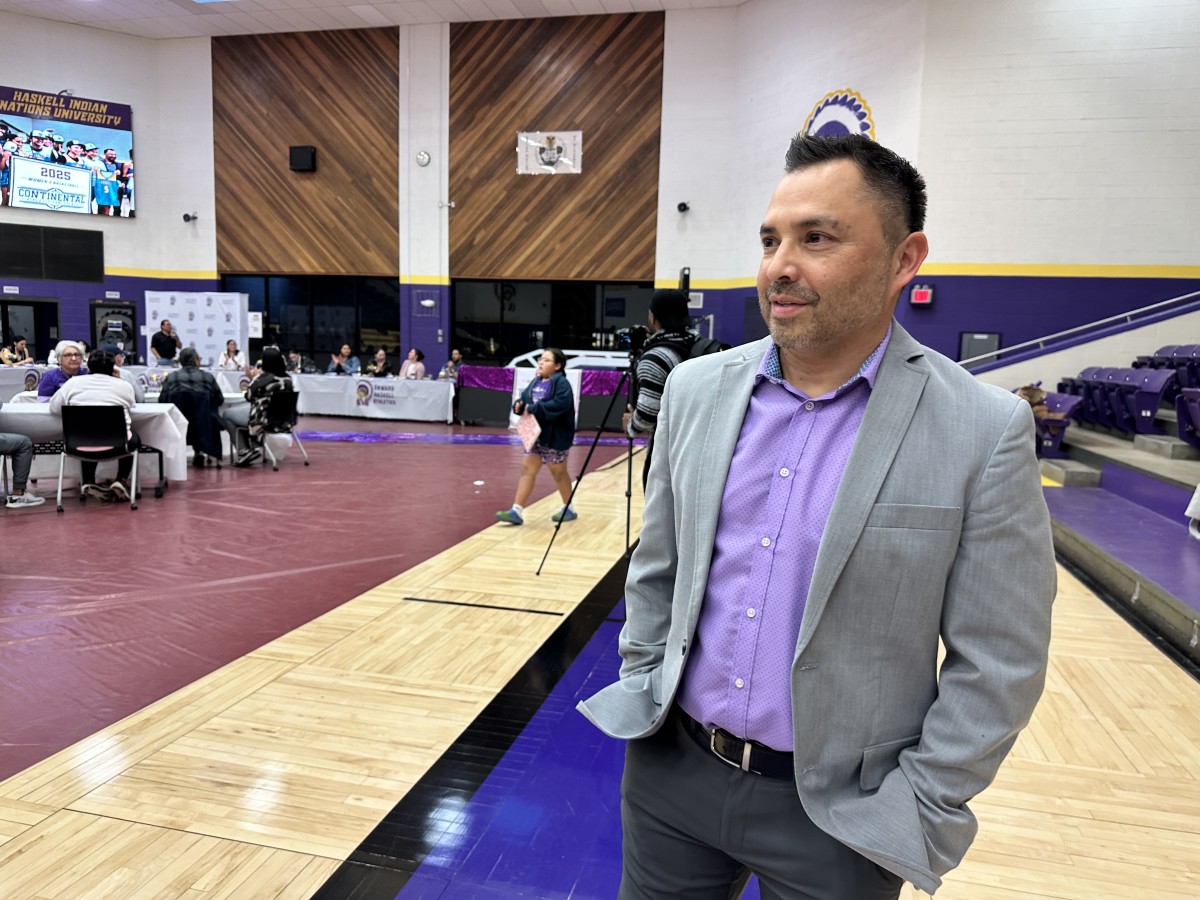
Women's basketball head coach Adam Strom at Haskell Indian Nations University celebrates on Thursday, March 6, 2025, not just his team's win in the Continental Athletic Conference Women’s Basketball Championship Tournament held Feb. 27-March 2. He also learned he's getting rehired after being laid off during Trump administration cuts on Feb. 14. He coached the team to the championship without pay. (Photo by Kevin Abourezk/ICT)
His son, Bryan Strom Jr., Quinault Indian Nation, a senior in environmental sciences at Haskell, said he was happy to see his dad get rehired, saying his father had felt “empty” after losing his job.
He said student morale has also improved since learning that faculty would be rehired.
“I think it’s a good thing, a great thing actually for the overall students,” he said. “I know a lot of people were getting worried and kind of been unmotivated to go to class.
“It’s just a blessing.
Haskell: Hope for some, silence for others
Our stories are worth telling. Our stories are worth sharing. Our stories are worth your support. Contribute today to help ICT carry out its critical mission.

BY KEVIN ABOUREZK is a longtime, award-winning Sicangu Lakota journalist whose work has appeared in numerous publications. He can be reached at kevin@ictnews.org.
